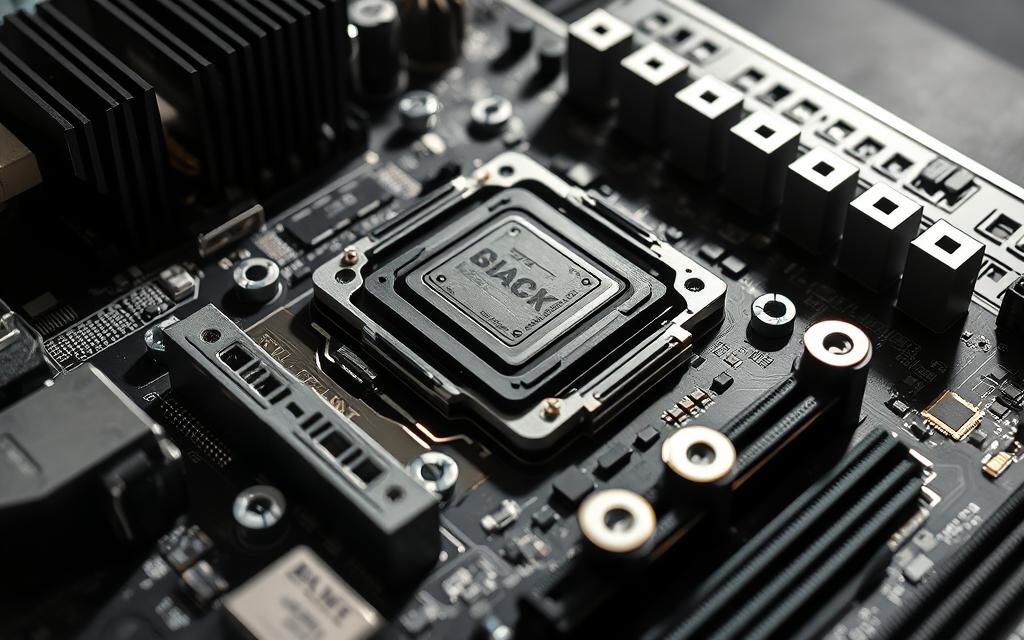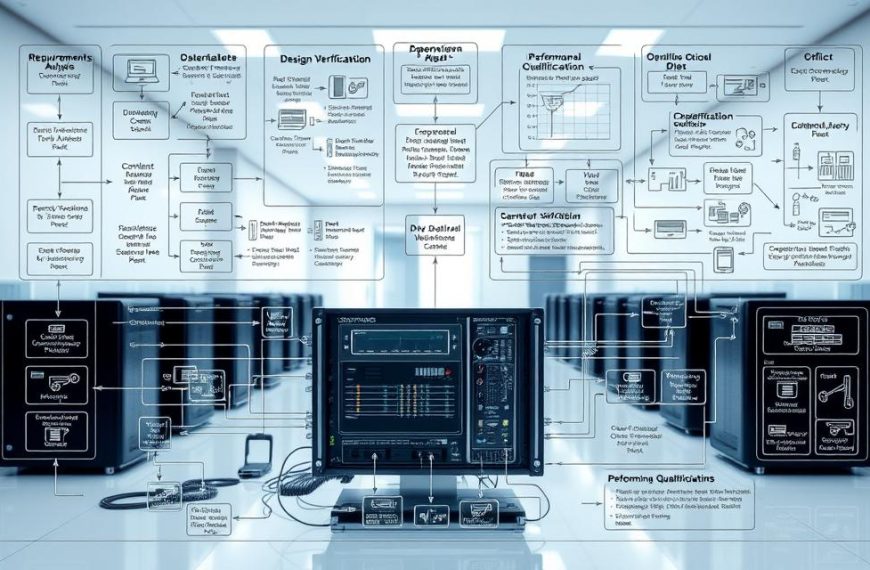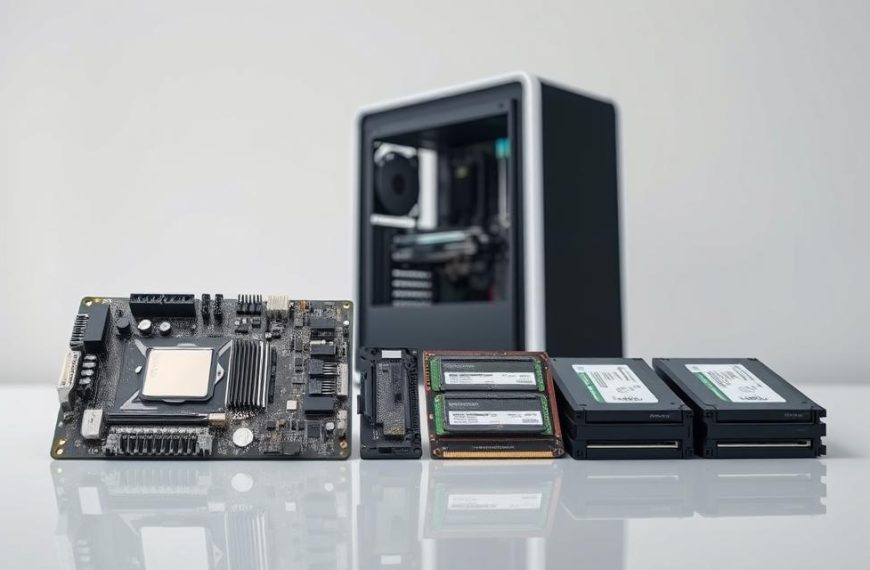Many think modern computers need an operating system to work. This idea is a key part of computer fundamentals for beginners. But is this always true?
Bare metal computing questions this belief. It means programmes run straight on hardware, skipping the usual OS layers. This method has special benefits for certain tasks.
Early systems worked without today’s operating systems. Programmers worked directly with hardware, learning each part’s role. Knowing these operating system essentials shows how computing has grown.
Looking into a no OS computer shows interesting things about hardware. It shows how software can talk directly to physical parts. This is useful for developers and engineers.
We start with a basic question. We’ll look at both the past and today’s use of bare metal computing.
Understanding the Role of an Operating System
Operating systems are key in managing complex hardware resources. They provide a stable environment for programmes to run smoothly. These software platforms act as a bridge between hardware and applications, making modern computing possible.
Core Functions of an OS in Modern Computing
Today’s operating systems handle many tasks that make computing easy and efficient. They take on complex jobs that developers would normally need to do themselves.
Resource Allocation and Hardware Management
One main job of an OS is to manage resources like memory, processor time, and storage. It makes sure these resources are shared fairly among applications. This prevents system crashes.
Another important role is hardware abstraction. OSes provide standard interfaces for devices. This lets developers write apps without knowing the details of specific hardware.
Operating systems help users interact with their devices. They translate user actions into commands that the computer can understand. This can be through graphical interfaces or command-line terminals.
OSes manage how programmes run. They load apps into memory, schedule tasks, and handle input/output operations. They also keep programmes secure from each other.
The Historical Evolution of Operating Systems
The history of operating systems is a journey from manual to automated management. In the early days, technicians had to set up machines for each task.
From Early Computing to OS Standardisation
In the 1950s and 1960s, computers didn’t have resident operating systems. Programmers worked directly with machine code, managing resources manually.
The 1960s saw the first big step towards modern OSes. Batch processing systems automated job sequencing and basic input/output operations. This reduced the need for manual intervention.
| Aspect | Early Computing (1950s-1960s) | Modern OS Environment |
|---|---|---|
| Resource Management | Manual configuration by operators | Automated allocation and scheduling |
| Hardware Access | Direct physical manipulation | Standardised abstraction layers |
| User Interaction | Physical controls and switches | Graphical and command-line interfaces |
| Programme Execution | Single-task, manual loading | Multi-tasking, automatic memory management |
By the 1970s and 1980s, OSes evolved to support time-sharing, multi-tasking, and virtual memory. This led to the development of standardised systems that could run on different hardware.
The creation of UNIX and other systems set the stage for modern OS design. They introduced key concepts of resource management and hardware abstraction. These innovations helped create stable environments for applications to run reliably across various hardware platforms.
Proof That a Computer Can Run Without an Operating System
Computers don’t always need operating systems to work. Many examples show they can run well without them. This shows how hardware and software work together, leading to efficiency and specialisation.
Embedded Systems and Microcontroller Applications
Embedded systems are common examples of computers without operating systems. They do specific tasks in bigger systems.
Microcontrollers are key to these systems. They let developers control hardware directly, without the need for an OS. This makes them reliable and fast in critical tasks.
Real-World Examples: Arduino and Raspberry Pi
The Arduino platform shows how microcontrollers can work without an OS. Developers write code that interacts directly with hardware.
Raspberry Pi can also run without an OS for special projects. This lets users control hardware fully for robotics and IoT devices.
Direct Boot Processes and Custom Firmware
Some systems can skip operating systems and go straight to booting. This loads programmes directly into memory, cutting out OS layers.
Custom firmware is vital for these systems. It gives the low-level instructions needed for hardware setup and programme running, without needing a full OS.
Case Analysis: Booting into a Bare Metal Programme
A bare metal boot starts with firmware setting up hardware. Then, it loads a specific programme into memory, running it without OS help.
This method has many benefits for special tasks:
- It’s faster because it skips OS loading
- It gives direct access to hardware for better performance
- It’s simpler and safer because it avoids OS bugs
Legacy Systems and Historical Precedents
Old computers didn’t need what we call operating systems today. These early systems give us insights into how we can approach computing now.
First computers used plugboards and entered code manually. Programmers controlled hardware directly, without the need for layers or memory management.
Computers Operating Without Modern OS Support
Many industrial control systems run without modern OS support. They use special software that talks directly to hardware.
Automation equipment often runs custom programmes on dedicated controllers. These focus on reliability and precise performance, not general computing.
Scientific tools often use custom software without full OS. This ensures accurate timing and direct sensor access for precise data.
Methods for Running a Computer Without an Operating System
Computers can work without an operating system, but it needs special methods. These involve direct hardware control through specific programming.
Bare Metal Programming Techniques
Bare metal programming is the most basic way to run a computer without an OS. It means writing software that talks directly to hardware, skipping any middle layers.
Writing Low-Level Code for Hardware Interaction
Writing low-level code for hardware needs exact control over memory and ports. Programmers must set up hardware manually, unlike an OS would.
This includes setting up memory and handling interrupts. They also control peripheral devices directly. The programmer handles everything.
For bare metal programming to work, you need to understand computer architecture well. Developers must know how their code interacts with hardware at a detailed level.
Tools and Environments for OS-Free Development
Special tools are key for making software that runs without an OS. These environments help control hardware directly and set up the system.
Utilising Assembler and C for Direct Control
Assembler programming gives the most control over hardware. It lets developers write code that directly matches processor operations, for top performance.
C programming for hardware is a good middle ground. C offers higher-level features but also lets for direct memory access and hardware control.
Important tools for OS-free development include:
- Cross-compilers that generate raw machine code
- Linker scripts for precise memory layout control
- Hardware abstraction libraries written in C or assembly
- Debuggers that work at the hardware level
These tools help programmers make systems that run without traditional operating systems. They’re tailored for specific hardware and performance needs.
Learning these tools takes a lot of skill but gives full control over system performance and behaviour.
Advantages of Operating Without an Operating System
Traditional computing often relies on operating systems. But, there are good reasons to think about using an OS-free approach. This method offers unique benefits that standard systems can’t match. It improves performance and allows for customisation.
Performance Optimisations and Efficiency
Removing the operating system cuts down on software layers that use up resources. This leads to big performance benefits. The system becomes leaner and more responsive.
Minimising Overhead for Maximum Speed
The biggest advantage is reduced overhead. Without an OS, memory and system calls are faster. This is great for tasks that need quick responses.
Real-time applications, like industrial control systems, benefit a lot. They need fast, predictable responses. Every second is important in these situations.
Customisation and Specific Use Cases
Not having a traditional OS lets you customise systems in new ways. Developers can control hardware and software directly. This is perfect for special needs.
Tailoring Systems to Unique Requirements
Many specific use cases need special computing setups. Medical devices and aerospace applications are examples. They need reliability and efficiency without extra features.
Internet of Things devices show how this works well. Smart sensors can last years on battery power without an OS. Here’s a table showing the benefits in different areas:
| Application Area | Performance Benefit | Customisation Advantage | Typical Implementation |
|---|---|---|---|
| Industrial Automation | Deterministic timing | Task-specific optimisations | Programmable logic controllers |
| Embedded Systems | Lower power consumption | Minimal memory footprint | Microcontroller programs |
| Real-time Processing | Reduced latency | Hardware-specific tuning | Digital signal processors |
| Research Instruments | Maximised computational efficiency | Application-specific interfaces | Custom firmware solutions |
These examples show how OS-free computing is great for special solutions. It focuses on efficiency and precision. This is perfect for tasks where standard systems are too complex.
Drawbacks and Challenges of OS-Free Computing
Removing the operating system layer brings complex challenges. It affects both making and using the system. The benefits are appealing, but the real-world issues are big and need careful thought.
Development Complexity and Expertise Requirements
Bare metal programming is a big development challenge today. Without an OS, developers must handle hardware directly. This means they need to know a lot about how computers work.
They must understand processor architecture, memory, and how to talk to hardware. This is much harder than usual app development.
The Learning Curve for Bare Metal Programming
Learning bare metal development is tough. It requires a deep understanding of computer architecture. Developers need to know:
- How processors work and how to use them
- How to manage memory and addresses
- How to handle interrupts and timing
- How to talk directly to hardware
Getting good at this takes years. The cost of learning and improving is high.
Security and Compatibility Limitations
Without an OS, there’s no built-in security. This leaves systems open to threats. Developers must create their own security solutions.
Systems without an OS miss out on key security features. These include:
- Memory protection and process isolation
- User authentication and access controls
- Network security and encryption
- Automatic security updates and patches
This means developers have to start from scratch. This makes things more complex and vulnerable.
Risks and Functional Gaps Without an OS
Not having an OS limits what systems can do. Compatibility issues are a big problem. This is because systems can’t easily work with standard devices and software.
Without drivers and standard interfaces, each piece of hardware needs special programming. This:
- Makes development slow and hard
- Causes problems as hardware changes
- Limits how well systems work with other devices
- Makes it hard to update or change systems later
These problems make OS-free computing hard to use for most tasks. It’s useful in some cases, but not for everyday use.
Conclusion
Computers can work without an operating system. This is shown in embedded systems, old computers, and bare metal programming. It proves that, even if rare in everyday devices, running without an OS is possible for special tasks.
Being without an OS has its perks. You get better performance, full control over hardware, and great efficiency. These are key for systems that need to work fast and without delay.
But, there are big hurdles. Making these systems is hard without the help of an OS. It also makes keeping them safe a bigger challenge, as developers have to do more themselves.
This summary shows that bare metal systems have their place. They are vital in fields like medicine and industry control. They are not meant to replace all operating systems but are perfect for certain tasks.











